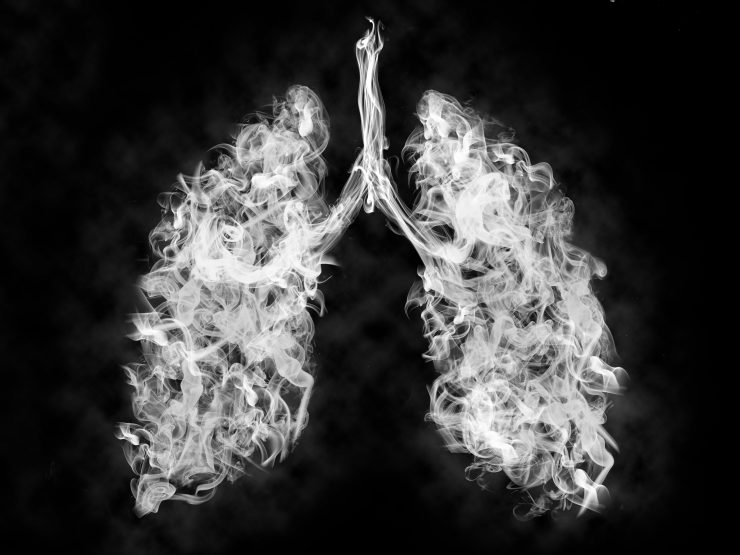Where there is smoke, there’s fire, but in the case of vaping, there has been a mist of uncertainty. Chapman Professor Georgiana Bostean is working on writing policy for a national public health organization to bring clarity to a practice that has seen a spike in illnesses, injuries and even deaths.
The popular and, until recently, unregulated tobacco practice has been in the news because as of Oct. 31, 2019, 1,888 vaping linked illnesses and injuries and 37 deaths, and now a lawsuit alleging the most prolific e-cigarette company, Juul, may have knowingly supplied more than 1 million tainted refill pods into the market. Around 79% of victims are under 35, according to reports from The Centers for Disease Control and Prevention (CDC). The CDC is updating every Thursday during this crisis.
These products are advertised as an alternative to smoking for existing tobacco users, but are frequently geared toward a consumer market under 30.
Bostean, Ph.D., a demographer and professor double appointed in the Department of Sociology and Schmid College of Science and Technology, has been researching e-cigarette trends and data and their correlative use by children and teens since 2014. She is a contributing writer for updating the American Public Health Association’s (APHA) policy statement concerning vaping, assessing for the recent deaths and illnesses. Her current research focuses on teen access to vape products and the location of vape retailers in relation to schools.
“Adolescent e-cigarette use rose sharply through 2015, then appeared to dip briefly, but once Juul emerged on the market, there was once again a rapid increase in use,” says Bostean.
Bostean noted CDC statistics confirming that teen use of e-cigarettes in 2017-2018 jumped from 11.7% to 20.8%. That’s a massive one in five students reporting that in 2018 that they used electronic cigarettes in the past 30 days when in 2011 it was only 1.5%.

The APHA cites that while vaping has been marketed as a cessation to smoking option, it comes with increased risks including:
- Increased teen access, with risk of addiction
- Increased use during pregnancy, with risk of fetal health problems
- Increased exposure to liquid nicotine by infants and small children, which is poisonous
Low Age, High Risk
Other forms of tobacco use in youth demographics have either not moved or gone down, with e-cigarettes being the sole rising tobacco market.
Portability, options for discreet use, plus candy-inspired flavors give the products appeal to teen audiences, where there is the strongest foothold. With it, comes increased access to high-risk injury products with doctored devices and chemical mixes, as well as the potential for heightened exposure to the fast-rising affliction.
An early study of 17 cases of injury and illness was published in a paper from the New England Journal of Medicine (NEJM) in early October. The paper reported not pneumonia-like conditions, as first suspected, in the lungs of the victims, but overall inflammation and lung damage. Many of those cases, in-line with reports from the CDC, involved the combination of vaping with illicit Tetrahydrocannabinol (THC) products.
“The most recent recommendation from FDA and CDC is to stop vaping all THC-containing products, and not to use “off the street” products,” said Bostean. “The outbreak was not confined to users of a particular brand or type of vaping device and there were, in fact, cases, over 10%, in which patients reported vaping only nicotine-containing products. Some vaping devices allow users to modify the juice contents, so the recommendation is that users not modify or add anything to juices.”
While a manufacturer like Juul may operate with regulation in product creation or production, even with FDA approval rulings, there is not a precise standard for how to mix or combine the liquids used in vape or vape related products.
Bostean says that while the FDA has since begun conducting retailer inspections, vape shops mixing their own juices are now considered “manufacturers” as well as retailers, and must apply for approval for both.
“There are many products that continue to be sold that have not been approved or tested,” says Bostean. “In addition, because many of these devices are made to be modifiable by the user, users can modify their juices themselves – there are even videos online on how to do this.”
Awareness and Diagnosis
Bostean comments that it’s likely that the very rapid rise in case numbers is in part attributable to increased awareness of the problem, ultimately helping physicians accurately diagnose the lung injury as being linked to vaping.
What that means is there may have been cases prior that experienced similar symptoms but were not identified as being linked to vaping, perhaps because many physicians did not know to ask specifically about vaping.
Based on recent findings, the CDC held a webinar for physicians held in late September, which gave guidelines for the types of symptoms to watch for and questions to ask patients.
The reported lung injury and illness symptoms come in the form of:
- Shortness of breath
- Chest pain
- Nausea
- Fever
More information about the current crisis and tobacco use can be found at the CDC, the APHA and at the NEJM.




